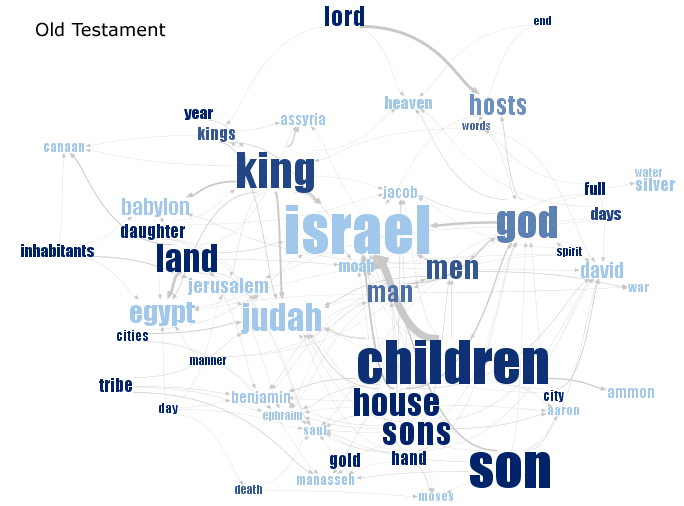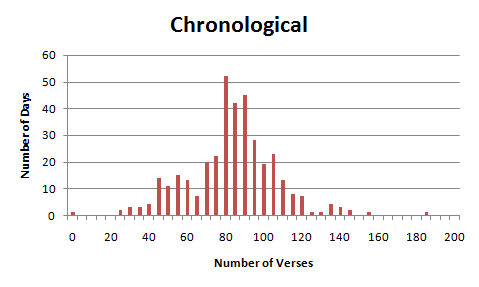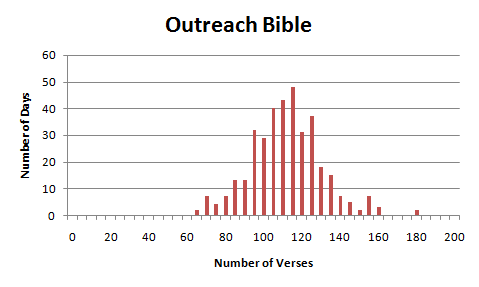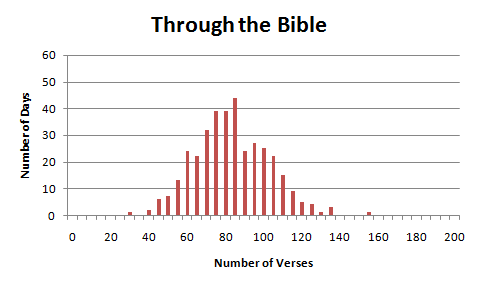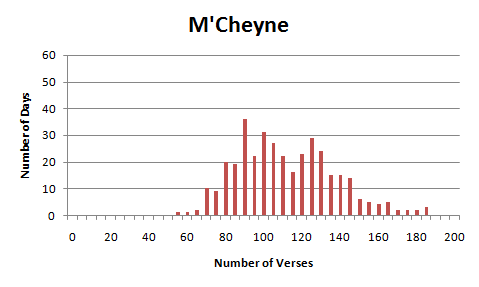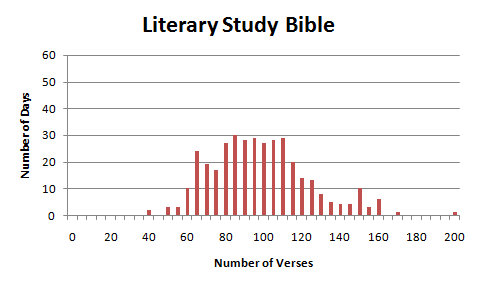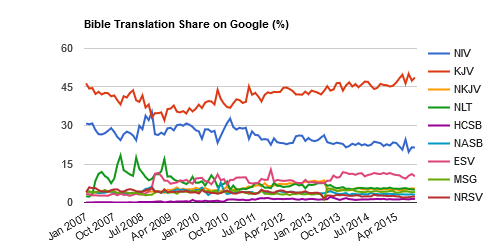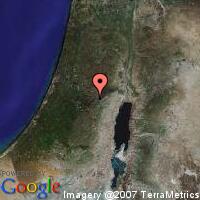Sean at Blogos recently wrote about applying collective intelligence to biblical studies. His post leads me to write about an experiment I’ve been running even though the experiment isn’t quite fully baked yet.
Collective intelligence (sometimes called “the wisdom of crowds”) is something that I think will become more important in biblical studies as it becomes more important in other disciplines. The vast scope of the Internet makes possible explorations of questions that have been impractical until now.
So, what’s a practical application of collective intelligence to biblical studies? Paragraph and section identification to help people study the Bible.
I paid 40 people on Amazon’s Mechanical Turk two cents each to add paragraphs to the book of Philemon in both the ESV and NLT translations. Total cost (including commission): $1.00.
Results
The thickness of the bar in the below table indicates how many people would start a paragraph at the given sentence. The ¶ symbols (not sent to the Turkers) indicate where the Bible translators themselves started paragraphs.
The table shows similarities between the two translations (except for some variation near the beginning) and also reveals some divergence with the translators’ paragraph ideas.
(If you’re reading this post in a feed reader, the below table won’t make much sense to you. You should click through to the original post if you want to see the styles.)
| Philemon (ESV) |
Philemon (NLT) |
| ¶ Paul, a prisoner for Christ Jesus, and Timothy our brother, |
¶ This letter is from Paul, a prisoner for preaching the Good News about Christ Jesus, and from our brother Timothy. |
| ¶ To Philemon our beloved fellow worker and Apphia our sister and Archippus our fellow soldier, and the church in your house: |
¶ I am writing to Philemon, our beloved co-worker, and to our sister Apphia, and to our fellow soldier Archippus, and to the church that meets in your house. |
| ¶ Grace to you and peace from God our Father and the Lord Jesus Christ. |
¶ May God our Father and the Lord Jesus Christ give you grace and peace. |
| ¶ I thank my God always when I remember you in my prayers, because I hear of your love and of the faith that you have toward the Lord Jesus and for all the saints, and I pray that the sharing of your faith may become effective for the full knowledge of every good thing that is in us for the sake of Christ. |
¶ I always thank my God when I pray for you, Philemon, because I keep hearing about your faith in the Lord Jesus and your love for all of God’s people. |
| And I am praying that you will put into action the generosity that comes from your faith as you understand and experience all the good things we have in Christ. |
| For I have derived much joy and comfort from your love…, because the hearts of the saints have been refreshed through you. |
Your love has given me much joy and comfort…, for your kindness has often refreshed the hearts of God’s people. |
| ¶ Accordingly, though I am bold enough in Christ to command you to do what is required, yet for love’s sake I prefer to appeal to you—I, Paul, an old man and now a prisoner also for Christ Jesus—I appeal to you for my child, Onesimus, whose father I became in my imprisonment. |
¶ That is why I am boldly asking a favor of you. |
| I could demand it in the name of Christ because it is the right thing for you to do. |
| But because of our love, I prefer simply to ask you. |
| Consider this as a request from me—Paul, an old man and now also a prisoner for the sake of Christ Jesus. |
| ¶ I appeal to you to show kindness to my child, Onesimus. |
| I became his father in the faith while here in prison. |
| (Formerly he was useless to you, but now he is indeed useful to you and to me.) |
Onesimus hasn’t been of much use to you in the past, but now he is very useful to both of us. |
| I am sending him back to you, sending my very heart. |
I am sending him back to you, and with him comes my own heart. |
| I would have been glad to keep him with me, in order that he might serve me on your behalf during my imprisonment for the gospel, but I preferred to do nothing without your consent in order that your goodness might not be by compulsion but of your own accord. |
¶ I wanted to keep him here with me while I am in these chains for preaching the Good News, and he would have helped me on your behalf. |
| But I didn’t want to do anything without your consent. |
| I wanted you to help because you were willing, not because you were forced. |
| For this perhaps is why he was parted from you for a while, that you might have him back forever, no longer as a slave but more than a slave, as a beloved brother—especially to me, but how much more to you, both in the flesh and in the Lord. |
It seems you lost Onesimus for a little while so that you could have him back forever. |
| He is no longer like a slave to you. |
| He is more than a slave, for he is a beloved brother, especially to me. |
| Now he will mean much more to you, both as a man and as a brother in the Lord. |
| ¶ So if you consider me your partner, receive him as you would receive me. |
¶ So if you consider me your partner, welcome him as you would welcome me. |
| If he has wronged you at all, or owes you anything, charge that to my account. |
If he has wronged you in any way or owes you anything, charge it to me. |
| I, Paul, write this with my own hand: I will repay it—to say nothing of your owing me even your own self. |
I, Paul, write this with my own hand: I will repay it. |
| And I won’t mention that you owe me your very soul! |
| Yes, brother, I want some benefit from you in the Lord. |
¶ Yes, my brother, please do me this favor for the Lord’s sake. |
| Refresh my heart in Christ. |
Give me this encouragement in Christ. |
| ¶ Confident of your obedience, I write to you, knowing that you will do even more than I say. |
¶ I am confident as I write this letter that you will do what I ask and even more! |
| At the same time, prepare a guest room for me, for I am hoping that through your prayers I will be graciously given to you. |
One more thing—please prepare a guest room for me, for I am hoping that God will answer your prayers and let me return to you soon. |
| ¶ Epaphras, my fellow prisoner in Christ Jesus, sends greetings to you, and so do Mark, Aristarchus, Demas, and Luke, my fellow workers. |
¶ Epaphras, my fellow prisoner in Christ Jesus, sends you his greetings. |
| So do Mark, Aristarchus, Demas, and Luke, my co-workers. |
| ¶ The grace of the Lord Jesus Christ be with your spirit. |
¶ May the grace of the Lord Jesus Christ be with your spirit. |
Let’s take this approach one step further, asking people to group the paragraphs into sections (pericopes), titling those sections, and then having other people vote on which section titles are best. Unfortunately, this part of the experiment is still in-process, so I don’t have anything interesting to show you.
Practical Implications for Bible Software
Purveyors of Bible software are in a unique position to benefit from this kind of collective intelligence. Although they don’t have the massive volume of users found on the Internet, they data they compile from Bible software users will be of higher quality than data compiled from the Internet. (For one, Bible software users probably aren’t out to attack Christianity, unlike a good number of people on the Internet.)
Further, Bible software publishers can create tools to implicitly shape collective intelligence to their users’ benefit. For example, they could create a tool that allows people to add their own paragraphs and sections to Bible texts. This tool could let you share this data you create anonymously with other users of the software. The goal isn’t to create the “one true paragraph and section divisions” for a passage, but merely to inform people of the choices others have made, indicating (if someone desires) how other people organize biblical texts.
Similarly, Bible software could help people anonymously share outlines of Bible books. I think you could also rank relevant resources (commentaries, say) for certain passages based on the resources people consult after reading those passages and the length of time they spend looking at the resources.
The idea behind this kind of collective intelligence is to collect implicit data—data based on things people are already doing—to improve the software. The more people who use the software, the better it becomes. You could try to come up with a slick algorithm to predict, say, the most relevant resources for a passage. But the beauty of a collective-intelligence approach is that the abundance of data means that even a simple ranking algorithm produces good results. Or, as Anand Rajaraman puts it, “more data usually beats better algorithms.”
I’m excited about applying collective intelligence to biblical studies. Implicit-data aggregation provides the most promising short-term possibilities, since a lot of data regarding user behavior in Bible software already exists. Pragmatically, I think Bible software publishers can get a lot of mileage just by analyzing this data and allowing it to inform their interface in limited ways.
But explicit collective-intelligence projects, such as the parable finder that Sean discusses in his post, could bear fruit in the long run. The key is to get lots of data—even noisy data will do—that can serve as the basis for analysis.
